In many western states, general rifle-hunting seasons often take place during the month of October, and into the first half of November. These rifle seasons provide a great deal of opportunity and the tags are relatively easy to obtain. However they can also present challenging hunting conditions for both elk and mule deer.
By the time most rifle seasons open in October, the elk rut has passed. Instead of being highly vocal and responsive to calls, bulls tend to move off on their own or in small bachelor groups to recover from the rut. With few exceptions, bulls will be silent, retreating to areas where they feel secure.
Meanwhile, the October and early November rifle seasons take place before the mule deer rut. Rather than being out on the prowl for does, most bucks, especially mature bucks, will remain solo or in small bachelor groups. It’s common to see small bucks mingling with does during this time. But the bigger bucks will be more coy, staging for the rut in sanctuary areas where they feel secure.
Despite these challenges, mid-season rifle hunts offer loads of opportunity. Tags for these seasons tend to be much easier to draw. For example, elk units here in Colorado that are difficult to draw during the archery season, often take fewer preference points if you’re willing to hunt during October or November. Likewise, it’s much easier to draw a mule deer license in a quality unit during Colorado’s 2nd rifle season. Tags become increasingly more difficult to draw the closer you get to the rut, during the 3rd and 4th rifle seasons respectively.
If you’re up for more of a challenge, mid-season rifle hunts offer plenty of opportunity. Considering these challenges, what is the best way to approach a rifle season hunt for post-rut elk or pre-rut mule deer?
Here are a few strategies that we like to remember during these mid-Season hunts:
1. Hunt Dark to Dark
Many hunters might enjoy a glorified fall camping trip, staying up late drinking beer around the fire with their friends. And while having fun is certainly part of the adventure, success during the rifle seasons also takes hard work. To consistently find mature mule deer bucks or bull elk this time of year, you need to be out of camp before daylight, and prepared to return after dark.
To help with this routine, load your daypack the night before. Pack your breakfast, your lunch, and fill your water. Then, you can quickly be out the door of your tent in the morning. If it takes 30 minutes to walk from your camp to where you want to be at daylight, factor that into the equation and set your alarm accordingly.

I like to be in my glassing position a few minutes before it’s light enough to see. First, it allows me to arrive under the cover of darkness. And second, I have a few minutes to set up my tripod, put on an extra layer and get comfortable. You should begin glassing the moment it’s light enough to see. Plan on glassing for the first couple hours of daylight during prime time. Then, you can take a break and eat your breakfast during the mid-morning lull. I even like to bring an ultralight stove like the MSR Pocket Rocket in my daypack to make a cup of coffee on the mountain.
Hunt all day long. Pack a lunch so that there’s no need to return to camp in the afternoon. While game will be most active early and late, you might be surprised what you’ll spot during the middle of the afternoon. Hunting pressure from other hunters will move animals around during the day. Use this to your advantage and stay alert.
Finally, decide where you want to be during the prime hours before dark. Get set up early, and be patient. Continue glassing until you can no longer see. Even if you spot an animal after legal shooting light, this can provide you with a great game plan for the following morning.
Getting out of camp before daylight and staying out until it’s dark isn’t easy, especially if the weather is cold. But hard working hunters will give themselves more opportunities this time of year.
2. Be Prepared to Glass
When hunting during over-the-counter or general rifle seasons, let your eyes do the walking whenever possible. Post-rut bull elk and pre-rut mule deer bucks may not travel far if you can locate them in protected sanctuary areas. Do your best to locate them first. Then, you can plan a careful stalk.
Locating game this time of year can be challenging. Animals have felt the hunting season pressure, and they may not move far from timber or bedding areas to their feeding areas. Be ready to spend hours each day behind your binoculars picking apart the timber and glassing along these transition zones.
Spend those “prime time” hours at the beginning and end of each day in a good glassing position. Carefully glass the seams between bedding and feeding areas. Focus on timber edges, the edges of burns, or avalanche chutes. Don’t expect a big bull elk to be feeding out in the middle of a big flat meadow. Instead, he’s more likely to be hanging around the seams on steep slopes, canyon walls or other hard-to-reach areas.

Bring a tripod and a mounting adaptor for your binoculars. Glassing for hours each day becomes much easier when your binoculars are on a tripod. And you’ll be surprised how much more clearly you’ll be able to see when your optics are stable. Even 8x or 10x binoculars benefit greatly from the stability of a tripod.
Still-hunting can be effective during hot weather or during the middle of the day. And moving around can help break up the monotony of glassing. However, my experience is that more often than not, this results in seeing the rear ends of animals as they’re running the opposite direction. When given a choice, I’d almost always rather put myself in a good glassing position and spot them before they see or smell me.
3. Take Advantage of Hunting Pressure
Since mid-season rifle hunts offer lots of opportunity, you can expect plenty of other hunters to be out on the landscape. But don’t let that deter you. In fact, hunting pressure can be used to your advantage.

As you’re driving to your trailhead, campsite or starting point, make a note of other camps you pass along the way. Drop a pin on your OnX Hunt map. Mark any additional access points to the area you’ll be hunting. Knowing the source and direction of any other hunting pressure is valuable information.
Looking at the camps and access points on the map, do your best to evaluate places that might offer security for elk or deer. Also, take note of saddles or natural funnels where game is likely to travel when pressured. You might discover a great place to sit on opening morning.
4. Stay Positive
Keeping a positive attitude on a challenging hunt is much easier said than done. When conditions are tough or when you’re not seeing animals, it’s far too easy to let your guard down. One of the best things you can do to increase your chances of success, is to maintain a positive attitude.
We’ve all been there, feeling discouraged or frustrated on a hunt and forgetting how rapidly things can change. Remember that in the blink of an eye, you could be looking at an animal within rifle range. It literally takes seconds to change the course of an entire hunt.

When things are difficult, keep working, keep glassing and don’t quit. Try and remind yourself as often as possible that each moment could be the critical moment. And you need to be ready. When you mentally give up, you begin to create your own self-fulfilling prophecy.
Success in hunting does take some luck. It often means being at the right place at just the right time. But the more you can persevere through challenges and continue putting yourself in good positions, the more “luck” you’ll create. And sometimes that biggest challenge is overcoming your own mental letdown.
Mid-season hunting is tough. If you begin with that expectation, it may be easier to work through it, enjoy it, and stay positive even when things aren’t going your way.
Hunting Gear for the Adventure
If you have questions or need help getting ready for your next hunting trip, please let us know! From Kenetrek boots, to JetBoil stove systems to game bags, we have the hunting gear to help you along the way.

By Ryan McSparran
Ryan is an outdoor writer based in Colorado, and is proud to be a part of the team at Caribou Gear.


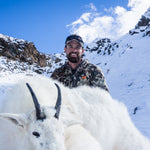





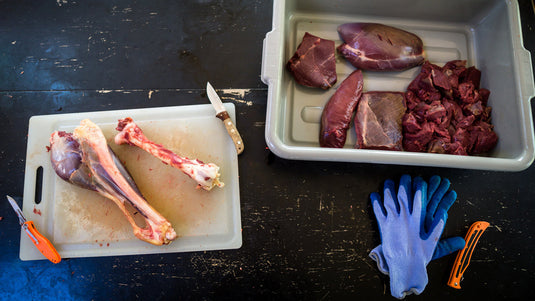
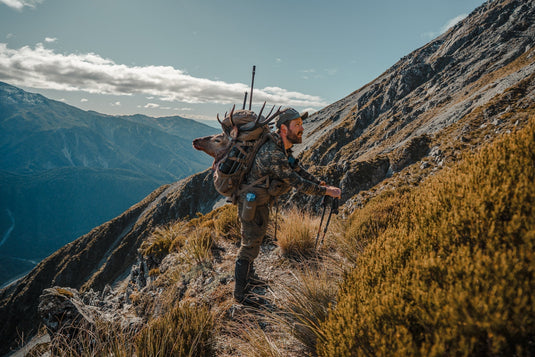
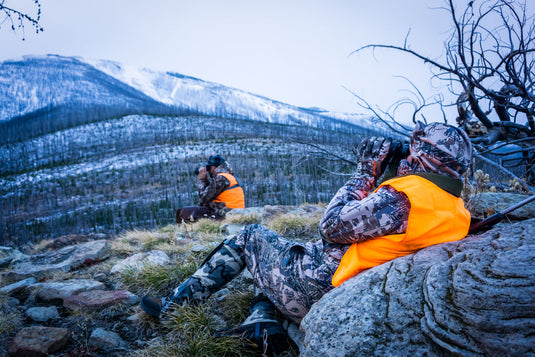
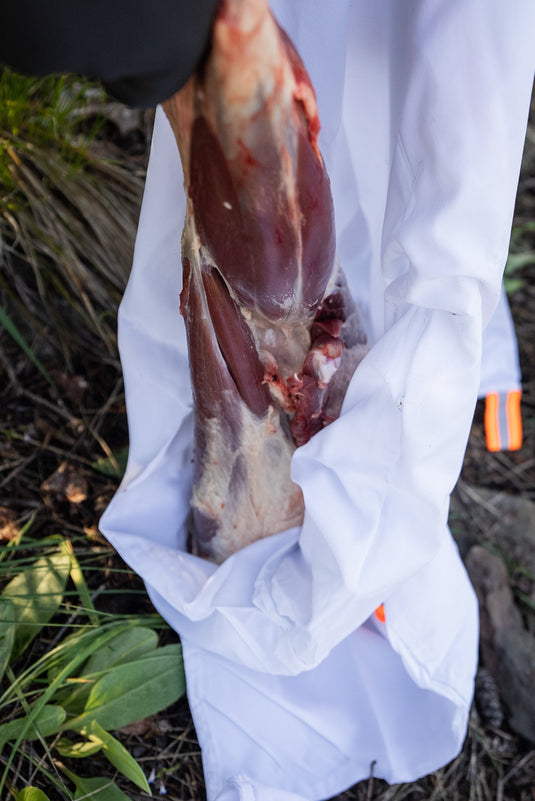
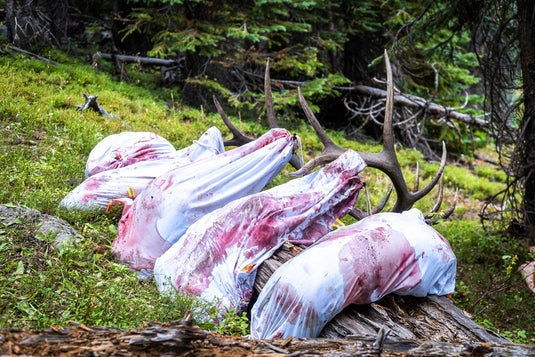
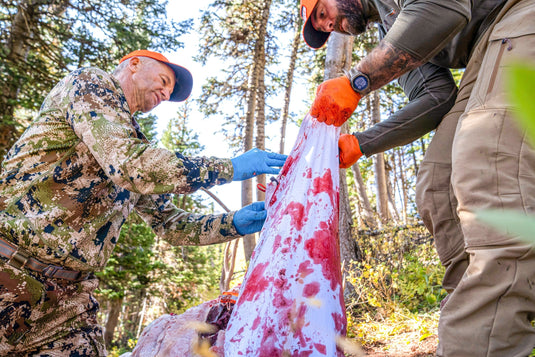
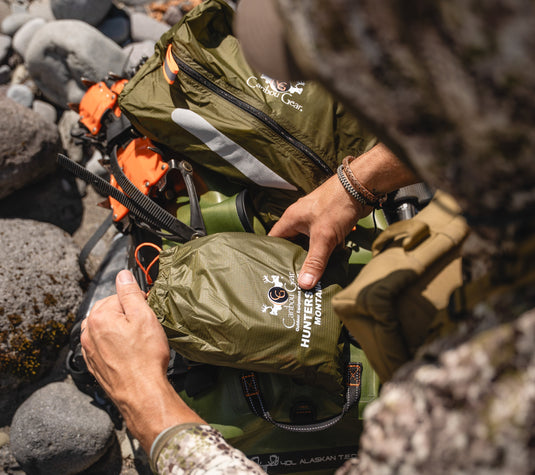
Great article